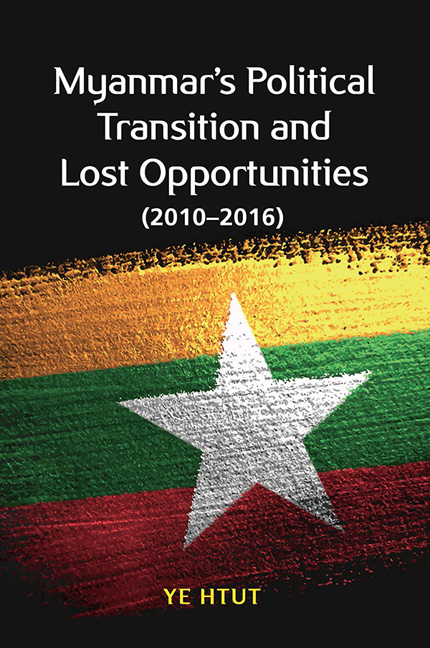Book contents
- Frontmatter
- Contents
- Foreword
- Acknowledgements
- Introduction: Myanmar's Political Reforms
- 1 The National Convention
- 2 The Constitution
- 3 The Union Solidarity and Development Party
- 4 Myanmar Spring and Aung San Suu Kyi
- 5 The Union Government
- 6 The Government and the Parliament
- 7 Shwe Mann's Checkmates
- 8 Turning Points
- 9 Media Reform
- Epilogue
- Appendix A President Thein Sein's Inaugural Address
- Appendix B President Thein Sein's First Address to the Cabinet
- List of Interviewees
- Index
- About the Author
- Plate section
3 - The Union Solidarity and Development Party
Published online by Cambridge University Press: 25 January 2020
- Frontmatter
- Contents
- Foreword
- Acknowledgements
- Introduction: Myanmar's Political Reforms
- 1 The National Convention
- 2 The Constitution
- 3 The Union Solidarity and Development Party
- 4 Myanmar Spring and Aung San Suu Kyi
- 5 The Union Government
- 6 The Government and the Parliament
- 7 Shwe Mann's Checkmates
- 8 Turning Points
- 9 Media Reform
- Epilogue
- Appendix A President Thein Sein's Inaugural Address
- Appendix B President Thein Sein's First Address to the Cabinet
- List of Interviewees
- Index
- About the Author
- Plate section
Summary
The Origin of kyant-kai-yay (Solidarity)
The word kyant-kai-yay (solidarity) was first introduced into Myanmar politics in 1958 during the reign of the caretaker government (1958–60) led by General Ne Win. The caretaker government formed an organization under the name Pyidaungsu Myanmar Naing-Ngan Kyant-kai-yay Athin (Union of Myanmar Solidarity Association) in October of that year. The association was formed with Khin Maung Phyu as chair, Colonel Kyaw Soe as vice chair, Colonel Than Sein as secretary and up to twenty-five central executive committee (CEC) members, including some secretaries of ministries, senior civil servants and senior army officers. The motto of the association was “regional development through dutifulness and selfreliance”. The association enlarged its CEC to thirty-nine members at its annual conference in 1960, electing Khin Maung Phyu as chair, Brigadier- General Aung Gyi and Paing as vice chairs, Colonel Than Sein as general secretary and San Lwin as treasurer.
In its charter, the association stated its commitment to work for the perpetuation of sovereignty, the enforcement of social ethics, and the restoration of community peace and the rule of law. The charter also stipulated provisions prohibiting solidarity organizations at all levels from association with any organization participating in or discussing party politics. Although the motto of the solidarity association was regional development, its activities were mainly in line with the endeavours of the caretaker government for ensuring community peace and the rule of law. Because of this, the association met with criticism from political parties, which dubbed it a government stooge.
By 1962 the solidarity association had grown to include 1,908 township or ward branches and 10,851 village branches, with a total membership of 1,163,537. The flag of the Union of Myanmar Solidarity Association was dark green with a white circle in the centre. Inside the circle was the picture of a leaping lion. Under the lion was an inscription that read “valour”, and above it were two white stars.
There was speculation that Senior General Than Shwe was influenced by the model of the first solidarity association when in 1993 he established the Union Solidarity and Development Association (USDA). However, a former senior leader of the USDA explained that although the senior general took examples from the name and structure of the original solidarity association, he had much greater ambitions for the USDA.
- Type
- Chapter
- Information
- Publisher: ISEAS–Yusof Ishak InstitutePrint publication year: 2019

